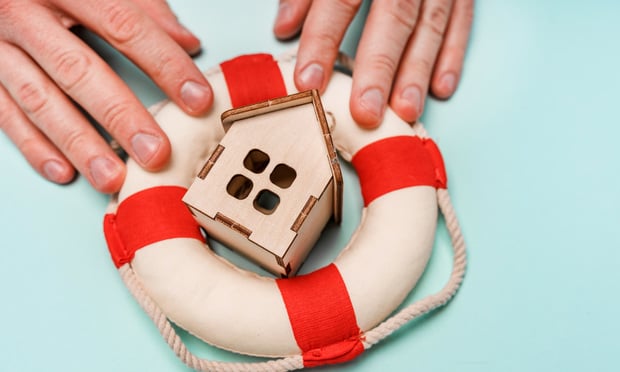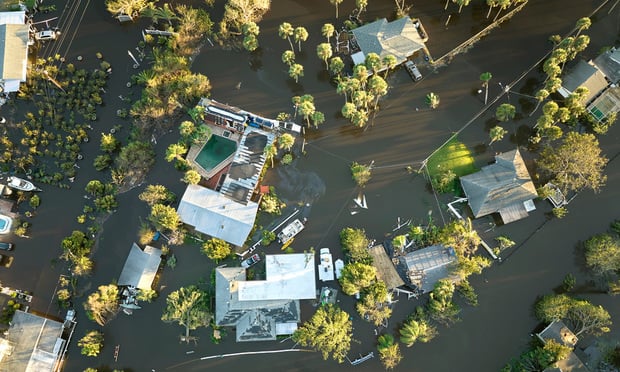As we climb out of the settling dust from the 2005 hurricane season and look forward, what can we expect from the Surplus Lines market in 2006? It may still be too early to accurately say where we are headed at this point. Multiple factors are impacting the availability of property coverage for the immediate future, and perhaps for years to come. These factors include: significant international losses as well as the those experienced in our Southeastern United States in the past few years; the availability and cost of reinsurance due to these large losses; modeling that saw losses many times more than anticipated; continuing claim payment activity with demand surge costs; downgrading/loss of available carriers; and new players on the horizon. It's important to review all of these factors to get the total picture.
Worldwide Impact
The ravages of Hurricanes Katrina, Wilma, and Rita have left Florida and the other Gulf States reeling, but 2005 wasn't good to the rest of the world either. In January of 2005 Windstorm Erwin blew through the United Kingdom and traveled across northern Europe and into Russia causing damage in the billions. There also were floods in Europe as well as a massive earthquake along the border between Pakistan and India.
All of these events caused billions of dollars in losses for insurers worldwide and dramatically changed the way carriers, especially in cat-exposed territories like Florida, look at their books of business. The amount of storms that have hit Florida and the Gulf States in the past two years have made carriers re-evaluate the way they compute their hurricane models to allow for more loss frequency. This is a major change in how the models are determined and it will ultimately require insurance companies to carry more surplus to handle the potential losses from another active hurricane season.
Reinsurance Outlook
These new computations will also have an effect on insurance carriers as they re-negotiate their reinsurance contracts for 2006. There will still be reinsurance available but it will cost more because re-insurers are more aware than ever of the hurricane risks here. Some carriers will have to non-renew sections of their existing books of business and property rates will go up because carriers will have to pay substantially more for their reinsurance. National carriers may decide to reduce their writings in Florida altogether, or simply stop writing new business accounts.
Traditionally, surplus lines carriers renegotiate their reinsurance treaties in January and July. But the majority of the reinsurance programs that deal with Florida come up in July. It will be after July and once the treaties are in place before we will begin to see a clear picture of where we stand in the property insurance market. One thing is certain: There will be less availability of property insurance in Florida in 2006, and it will cost more to buy it. In the face of the influx of hurricane losses and the rising cost of reinsurance, carriers will have to pass on these costs in terms of rate increases to keep pace. Some rates will increase more than 40 percent in the next year and will probably go higher.
Demand Surge Effects
The long term effects of this will take a while to become clear because, even now, insurance companies are still learning how bad their claims were with Katrina and Wilma as more and more claim payments are made each day. These claim payments are being inflated by what is called “demand surge.” Demand surge occurs when the need for disaster relief and recovery supplies increases dramatically due to shortages and increased demand, forcing the cost of these goods upward as people rebuild.
We can already see signs of what is to come in property insurance with some carriers adjusting their programs by increasing deductibles, raising rates, and restricting their underwriting to write lower limits or only ex-wind policies. Others will opt to non-renew a few large accounts to remain within their allotted surplus capacity and keep the remainder of their policies in force. In their efforts to stay within their reinsurance boundaries, carriers will be more reluctant to reinstate policies that have been cancelled for any reason.
Time for Reevaluation
As carriers revise their loss estimates and the amounts of surplus they will need to have in place, some of them will have to be re-evaluated by A.M. Best, which may cause some of their ratings to be downgraded. This will be a critical component of how the Florida insurance market will ultimately turn out in 2006.
Florida's recent history of hurricanes will also make it difficult for new carriers to enter the market here. It will cause insurance companies to have to juggle the surplus available to them throughout the country more prudently and may force carriers to reduce their commitments in Florida where the risk of loss is higher.
The availability of property insurance written ex-wind will increase as carriers scramble to write business that is less hazardous. Liability insurance will be the place where carriers will try and increase their writings to offset their diminished ability to write property coverage. Casualty lines were much less affected by the storms of last year and liability rates should remain at, or near, their present levels. There will be plenty of reinsurance still available for casualty programs.
Even though all of the items above will have an impact on the availability of property coverage, history has shown the surplus lines companies continue to remain strong in Florida in their efforts to be a viable, innovative, and constantly searching for ways to respond to insurance needs in this challenging marketplace. There are still companies actively writing and they will remain in the marketplace for the foreseeable future. To their credit the surplus lines carriers are still actively writing here in Florida and even in a tight market, we can depend on them.
Lets all hope that 2006 is kinder to us and that Mother Nature will give us all a break to catch our breath. A mild hurricane season this year would do a lot to start to return the market to more normal levels in 2007. In the insurance market one thing is certain: For this year, it's a work in progress.
Want to continue reading?
Become a Free PropertyCasualty360 Digital Reader
Your access to unlimited PropertyCasualty360 content isn’t changing.
Once you are an ALM digital member, you’ll receive:
- Breaking insurance news and analysis, on-site and via our newsletters and custom alerts
- Weekly Insurance Speak podcast featuring exclusive interviews with industry leaders
- Educational webcasts, white papers, and ebooks from industry thought leaders
- Critical converage of the employee benefits and financial advisory markets on our other ALM sites, BenefitsPRO and ThinkAdvisor
Already have an account? Sign In Now
© 2024 ALM Global, LLC, All Rights Reserved. Request academic re-use from www.copyright.com. All other uses, submit a request to [email protected]. For more information visit Asset & Logo Licensing.








